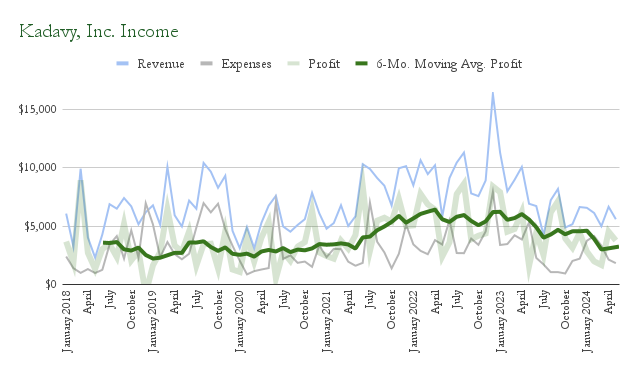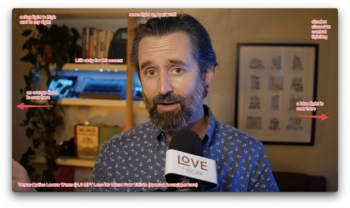August 2024 Income Report
To listen to an audio version of this report, join the Patreon »
August’s revenue was $9,077, down from July’s $9,084. Profits were $5,082, down from July’s $5,553.

David Kadavy is author of Mind Management, Not Time Management, The Heart to Start & Design for Hackers.
To listen to an audio version of this report, join the Patreon »
August’s revenue was $9,077, down from July’s $9,084. Profits were $5,082, down from July’s $5,553.
If you’re reading this in an email, I messed up and I’m sorry.
If you’re reading this in an RSS reader, this message is for you. keep on reading »
To listen to an audio version of this report, join the Patreon »
July’s revenue was $9,084, up from June’s $3,972. Profits were $5,553, up from June’s $2,006.
To listen to an audio version of this report, join the Patreon »
June’s revenue was $3,972, down from May’s $5,586. Profits were $2,006, down from May’s $3,764.
I’ve just developed a journal prompts workbook for building your 100-word writing habit. You can reserve yours now, only on Kickstarter.

To listen to an audio version of this report, join the Patreon »
May’s revenue was $5,586, down from April’s $6,653. Profits were $3,764, down from April’s $4,524.

To listen to an audio version of this report, join the Patreon »
April’s revenue was $6,653, up from March’s $4,990. Profits were $4,524, up from March’s $1,667.
 I recently spent a boatload of time researching cameras, lenses, and lighting to improve my video quality for conference calls, streaming, and podcast interviews. I had to wade through many YouTube videos by streaming gamers and camera gearheads who get too technical. So here’s what I found out, specifically for conference calls, in the most basic terms possible. keep on reading »
I recently spent a boatload of time researching cameras, lenses, and lighting to improve my video quality for conference calls, streaming, and podcast interviews. I had to wade through many YouTube videos by streaming gamers and camera gearheads who get too technical. So here’s what I found out, specifically for conference calls, in the most basic terms possible. keep on reading »
To listen to an audio version of this report, join the Patreon »
March’s revenue was $4,990, down from February’s $6,120. Profits were $1,667, down from February’s $1,975.
To listen to an audio version of this report, join the Patreon »
February’s revenue was $6,120, down from January’s $6,561. Profits were $1,975, down from January’s $2,815.